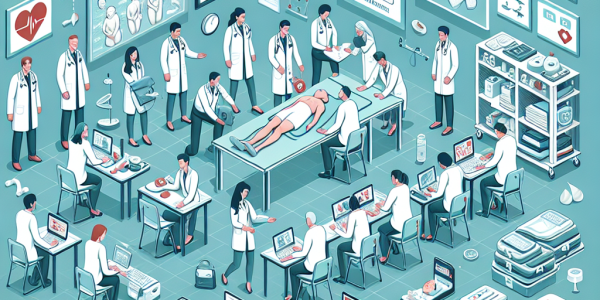Understanding the Importance of BLS in Emergency Situations
When it comes to life-threatening emergencies, every second counts. That’s where Basic Life Support (BLS) comes into play. BLS is a level of medical care used in emergency situations until the patient can be given full medical care at a hospital. It can be provided by trained medical personnel, including emergency medical technicians, paramedics, and by qualified bystanders.
What is Basic Life Support (BLS)?
Basic Life Support is a set of interventions that healthcare providers and public safety professionals use to treat victims of cardiopulmonary arrest and other cardiovascular emergencies. BLS includes techniques such as chest compressions and artificial ventilation to help maintain blood flow and oxygenation to the brain during cardiac arrest.
The Role of BLS in Emergency Situations
BLS plays a crucial role in the chain of survival. According to the Centers for Disease Control and Prevention (CDC), sudden cardiac arrest is a leading cause of death among adults over the age of 40 in the United States. The immediate initiation of BLS can double or even triple a victim’s chance of survival.
1. Early Recognition and Call for Help
Recognizing the signs of a cardiac emergency and calling for help is the first step in the BLS process. Symptoms can include sudden loss of responsiveness, no normal breathing, and no pulse.
2. Early CPR
Starting CPR as soon as possible can keep oxygen-rich blood flowing to the brain and other vital organs until more definitive medical treatment can restore a normal heart rhythm.
3. Early Defibrillation
As soon as an automated external defibrillator (AED) is available, it should be used. An AED is a portable device that checks the heart rhythm and can send an electric shock to the heart to try to restore a normal rhythm.
4. Early Advanced Care
Advanced life support is typically provided by trained healthcare providers and includes the use of medications, advanced airway techniques, and other interventions.
The Importance of BLS Training
Having BLS skills can make the difference between life and death during a crisis. According to the National Institutes of Health (NIH), the survival rate for out-of-hospital cardiac arrests is less than 10%. However, if a bystander is able to start CPR immediately, the victim’s survival rate can double or even triple.
Anyone can learn BLS and become a lifesaver. American Health Training offers online BLS certification courses that are designed to be easy to learn and easy to remember. These courses are perfect for healthcare professionals or anyone who wants to be prepared in the event of an emergency.
Conclusion
Understanding the importance of BLS in emergency situations is crucial. It’s a simple skill set that can save lives in the crucial minutes before professional help arrives. Whether you’re a healthcare professional or a layperson, BLS training is an invaluable tool in your arsenal. Remember, the life you save with BLS could be someone you love.


